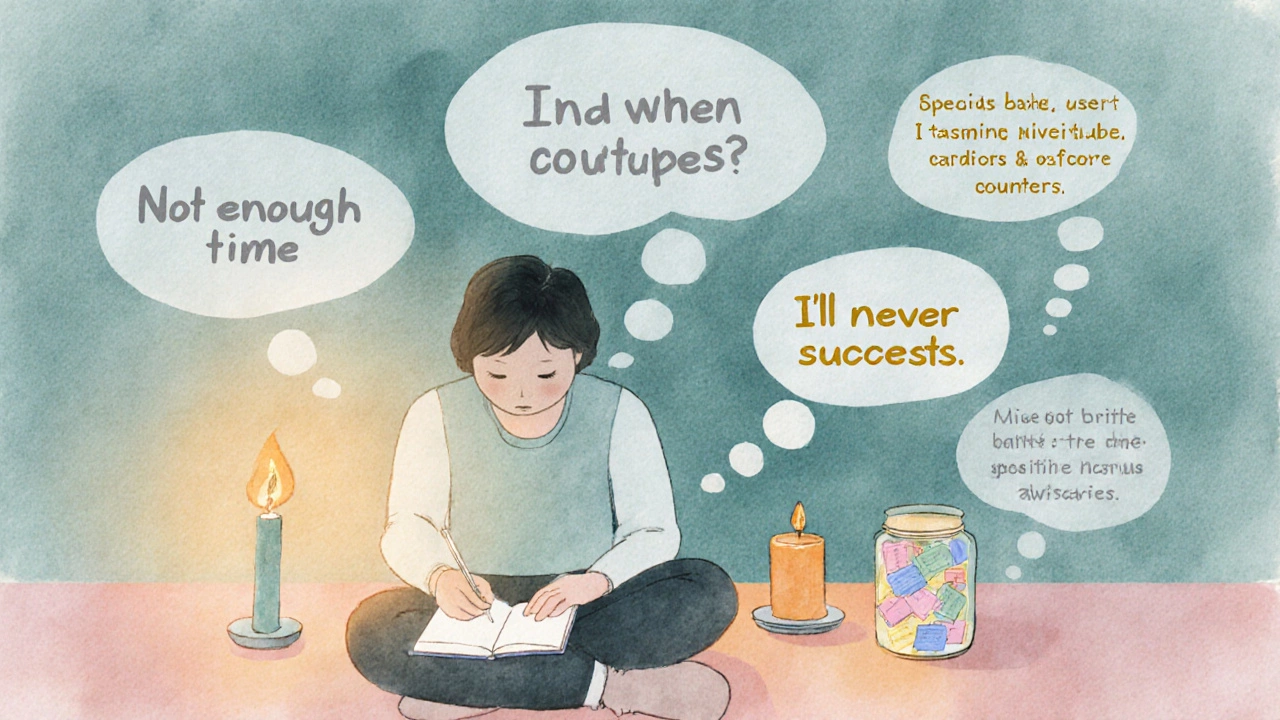Abundance Mindset Tracker
Daily Mindset Log
Your daily goal: Track 3 abundance actions
Ever feel like life is a zero‑sum game, where someone else’s win means your loss? That’s the hallmark of a scarcity mindset, and it keeps you stuck in fear, comparison, and chronic stress. Switching to an abundance mindset rewires those patterns, letting you see opportunities, collaborate, and thrive. Below you’ll learn exactly what an abundance mindset is, why it matters, and a step‑by‑step plan to make it your default mode.
What Is an Abundance Mindset?
Abundance mindset is a mental framework that assumes resources, opportunities, and success are plentiful rather than limited. It’s rooted in the belief that growth is possible for everyone, including yourself, and that collaborative effort expands the pie instead of shrinking it.
Contrast that with a Scarcity mindset, which operates on the premise that there’s never enough-whether it’s money, love, or recognition. Scarcity thinking fuels competition, jealousy, and a chronic sense of lack.
Why an Abundance Mindset Matters
Research in positive psychology shows that people with an abundance orientation report higher life satisfaction, better relationships, and more resilient health. A 2023 longitudinal study of 2,000 adults linked abundance‑focused thinking to a 30% increase in income growth over five years, largely because these individuals pursue opportunities rather than avoid risk.
Beyond dollars, an abundance mindset fuels creativity. When you’re not paralyzed by “what if I fail?”, you’re freer to experiment, iterate, and learn-key ingredients for personal and professional growth.
Common Scarcity Thoughts That Block Abundance
- "There’s not enough time for me to try new things."
- "If I succeed, someone else will lose out."
- "I’m not as smart/wealthy/talented as others."
- "Failure would prove I’m not good enough."
- "Opportunities are reserved for a lucky few."
Each of these thoughts is a cognitive shortcut that your brain uses to protect you from disappointment. The trick is to recognize them, label them, and then replace them with evidence‑based, growth‑oriented statements.
Step‑by‑Step Guide to Cultivate an Abundance Mindset
- Identify scarcity triggers. Keep a simple journal for one week. Whenever you feel anxiety, jot down the exact thought and the situation that sparked it.
- Reframe with evidence. For each trigger, write a counter‑statement backed by a real example. If you thought, “I’ll never learn coding,” note that you’ve already completed two online tutorials.
- Practice gratitude daily. Set a 5‑minute alarm each evening. List three specific things you’re grateful for-focus on concrete details, not vague ideas.
- Visualize abundance. Spend a minute each morning picturing a successful outcome (e.g., a completed project, a meaningful conversation). Engage all senses to make the image vivid.
- Adopt positive self‑talk. Replace “I can’t” with “I’m learning how to.” Speak to yourself as you would a supportive friend.
- Set stretch goals. Choose one goal that feels just beyond your comfort zone and break it into micro‑tasks. Celebrate each micro‑victory to reinforce the belief that growth is possible.
- Leverage neuroplasticity. Your brain rewires based on repeated patterns. By consistently practicing these new habits, you strengthen neural pathways that support abundance thinking.
- Seek collaborative environments. Join a mastermind group or a hobby club where members share wins and challenges. Witnessing others’ successes normalizes abundance.
Stick to this routine for 30 days. By the end, you’ll notice a measurable shift in how quickly you spot opportunities and how comfortably you handle setbacks.

Daily Practices That Reinforce Abundance
- Gratitude practice. Write a brief note to someone you appreciate, or keep a gratitude jar where you drop a slip of paper each day.
- Visualization. Use a vision board-digital or physical-to display images representing your desired future.
- Positive self‑talk. Create a list of affirmations (e.g., “I attract opportunities”) and repeat them during idle moments.
- Mindfulness meditation. A 10‑minute breathing exercise calms the amygdala, reducing the fight‑or‑flight response that fuels scarcity fear.
- Goal setting. Review your short‑term goals each morning and align daily actions with them.
Overcoming Setbacks with Cognitive Tools
Cognitive behavioral therapy (CBT) offers a practical framework for challenging unhelpful thoughts. When a scarcity thought pops up, ask:
- What’s the evidence for this belief?
- Is there an alternative, more balanced interpretation?
- What action can I take that aligns with abundance?
Combining CBT with the neuroplastic principle of repeated rehearsal creates lasting mental change.
Measuring Progress and Staying Consistent
Use a simple scorecard to track three metrics each week:
- Scarcity thought frequency. Count how many times you noticed a limiting belief.
- Abundance actions taken. Log each gratitude note, visualization session, or collaborative meeting.
- Outcome improvements. Note any tangible results-new projects, improved relationships, or financial gains.
When you see the numbers trend downward for scarcity thoughts and upward for abundance actions, you’ve got proof that the mindset shift is working.

Quick Checklist for an Abundance Mindset
- Identify and journal scarcity triggers.
- Reframe each trigger with factual counter‑statements.
- Practice gratitude every evening.
- Visualize a successful outcome each morning.
- Speak to yourself with supportive language.
- Set one stretch goal and break it into micro‑tasks.
- Engage in 10‑minute mindfulness meditation daily.
- Join a community that celebrates collective growth.
Frequently Asked Questions
Can I develop an abundance mindset if I’m naturally pessimistic?
Yes. Brain studies show that even deeply ingrained pessimism can be reshaped with consistent practice. Start with short gratitude moments and gradually increase the length of visualization sessions. Over weeks, the neural pathways associated with optimism strengthen, making a positive outlook feel more natural.
How long does it typically take to notice a shift?
Most people report a noticeable change after 30‑45 days of daily practice. The exact timeline varies based on consistency and baseline mindset. Tracking your scarcity‑thought frequency helps you see subtle improvements early on.
Is an abundance mindset the same as a growth mindset?
They overlap but aren’t identical. A Growth mindset focuses on the belief that abilities can be developed through effort. An abundance mindset adds the assumption that external resources-time, money, opportunities-are also plentiful. Together they create a powerful growth‑and‑plenty perspective.
Can mindfulness meditation really change my mindset?
Yes. Mindfulness reduces the brain’s stress‑response circuitry, lowering the intensity of scarcity‑driven fear. Studies from 2022 show a 25% reduction in anxiety scores after eight weeks of daily 10‑minute mindfulness, which correlates with more open, abundant thinking.
What if I slip back into scarcity thinking?
Slip‑ups are normal. The key is to catch the thought quickly, log it, and apply the reframing steps. Over time, the frequency of slips decreases as the abundance pathways dominate.
Putting It All Together
The shift from scarcity to abundance isn’t a one‑off event; it’s a daily practice of noticing, challenging, and replacing limiting beliefs. By following the step‑by‑step guide, using the daily habits, and tracking your progress, you’ll build a resilient mental model that sees opportunities where others see obstacles. Start today-write one gratitude note, visualize one success, and watch the change unfold.






